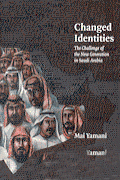Herewith are some of the best and most informative Brookings infographics and interactives from 2016. Click through the links (or the graphics) to get the full experience and content. See the 2015 and 2014 best infographics posts, too.
In this interactive timeline, Molly Reynolds and Philip Wallach recap six years of fiscal fights between President Obama and congressional Republicans.
Jesus Leal Trujillo and Joseph Parilla’s global map presents the world’s 123 largest metropolitan economies and classifies them according to the seven types of global cities—the drivers of global prosperity. Click through to get data on each locale.
Research by Ted Gayer, Austin Drukker, and Alexander Gold finds that since 2000 the federal government has subsidized new or renovated professional sports stadiums to the tune of $3.2 billion federal taxpayer dollars. In this interactive, find out the amount of the federal subsidy to, and resulting total taxpayer revenue loss for major sports stadiums across four major professional sports.
Richard Feinberg and Richard Newfarmer examine the causes of and potential for tourism in Cuba in the new era of U.S.-Cuba rapprochement. Click through to see all of the charts and policy recommendations
In her Brookings Essay, Susan Glasser examines the coverage of politics in “post-truth” America. One aspect of this is how people in different generations get their election news. For the youngest group, it’s social media, while those over 65 get their election news primarily from cable TV. Click through to the graphic to select and compare sources.
In “Against the death penalty,” Justice Stephen Breyer’s notable dissent in a landmark death penalty case is presented by editor John Bessler. This interactive reviews the main elements in the case and dissent. Click through for the full experience.
Analysis of county-level data by Mark Muro and Sifan Liu shows that while Hillary Clinton carried fewer than 500 of over 3,000 counties nationwide, she won nearly all of the largest counties in terms of economic output, accounting for 64 percent of the nation’s GDP.
Edward Rodrigue, Elizabeth Kneebone, and Richard Reeves examine the clustering of five dimensions of poverty: household income, education, concentrated spatial poverty, health insurance, and employment.
In his Brookings Essay, John Hudak chronicled the difficult personal and policy terrain of legalizing marijuana through the lens of one family and a dispensary owner. This chart, shows the status of medical marijuana throughout the country as of spring 2016. In November, voters in Florida, North Dakota, and Arkansas approved medical marijuana initiatives.
Recent Hamilton Project research examines 12 facts about incarceration and prisoner re-entry. E.g., fact no. 6: black and white Americans sell and use drugs at similar rates, but black Americans are 2.7 times as likely to be arrested for drug-related offenses.













Commentary
Best Brookings infographics of 2016
December 29, 2016